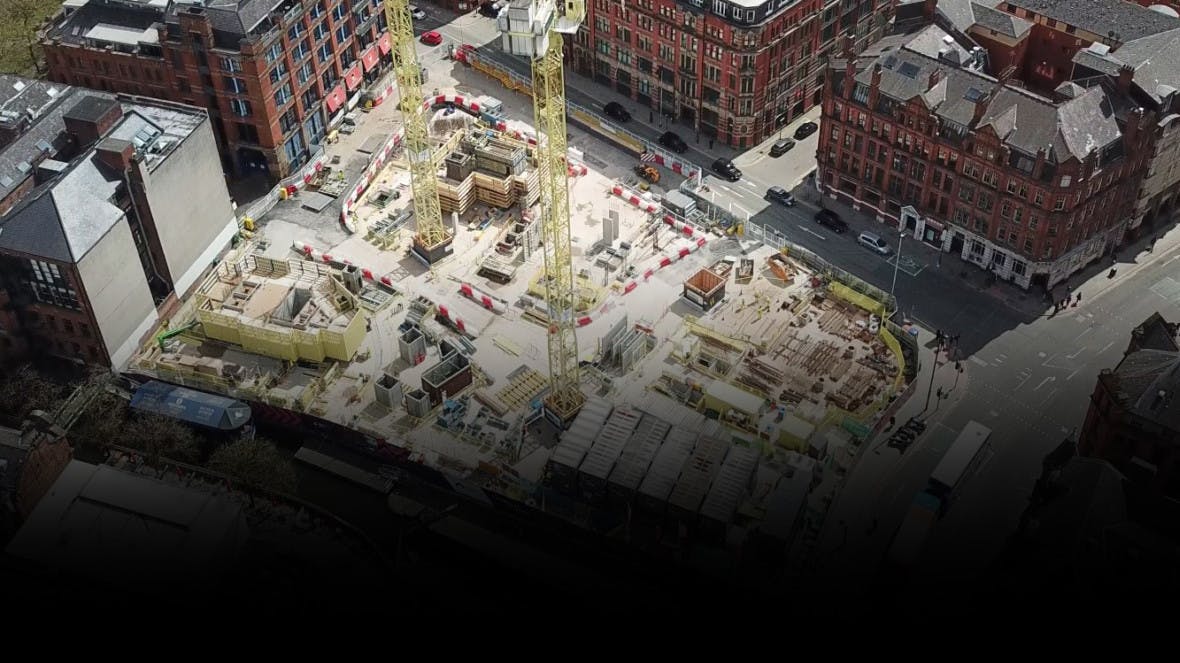Towering to new heights in Wembley and Manchester

In 2016, the Carey Group invested in six new tower cranes to further enhance our self-delivery capability. Supported by Careys Plant & Fleet, the tower cranes are currently deployed on two projects being undertaken by Careys Civil Engineering – Manchester New Square and Wembley Park.
- The Carey Group
- Monday 16th April 2018
Share this:-
“To date, the cranes have been deployed on a range of projects including The International Quarter in London and Marischal Square in Aberdeen, providing a reliable in-house resource for our teams,” says Gary Condon, Managing Director of Careys Plant & Fleet. “The cranes also come with a range of power optimisation features, helping to enhance our environmental credentials and provide the planning teams with certainty that they can access a critical piece of equipment that’s maintained to the highest of standards”.
Purchased from HTC, the UK arm of German crane manufacturer Wolffkran, the tower cranes come with extendable luffing jibs connected to the driver’s cabin and counterweights. The larger of the two models, the 355b, can lift 30t at 17m from the tower, or 5.3t at 55m, which is ideal for hauling heavy concrete skips.
The cranes use pin connectors on the towers for ease of construction and as a result boast some of the quickest erection/dismantle times of any cranes on the market without the requirement of expensive torque gear. The cranes are also within standard gauge sizes and can be transported on conventional road transport or within 40ft standard containerised units.
HTC offer industry leading function speeds, powered by high speed winches that achieve hook speeds of over 220m per minute. Although the slewing function and rotation speeds are no quicker than most competitors, the luffing boom speeds and in the upper quartile of performance, taking approximately 90 seconds to extend to their maximum radius.
In addition to this, the cranes also use the latest frequency driven motors to optimise function speeds with power consumption, being powered by electrical rather than diesel engines and used in conjunction with battery back-up generator systems for improved reliability. The cranes also include a ‘boost’ function which reduces function operating speeds and restricts motion to one operation at a time to enable a 10% enhancement of the safe working load capacity in certain areas. “These cranes are a key part of the service we offer to our teams” says Gary, “They enable us to undertake increasingly specialist jobs across the UK and have been a key success factor in a number of bids at a time when other companies have struggled to ensure access to them”.
We'd love to hear from you, so please get in touch